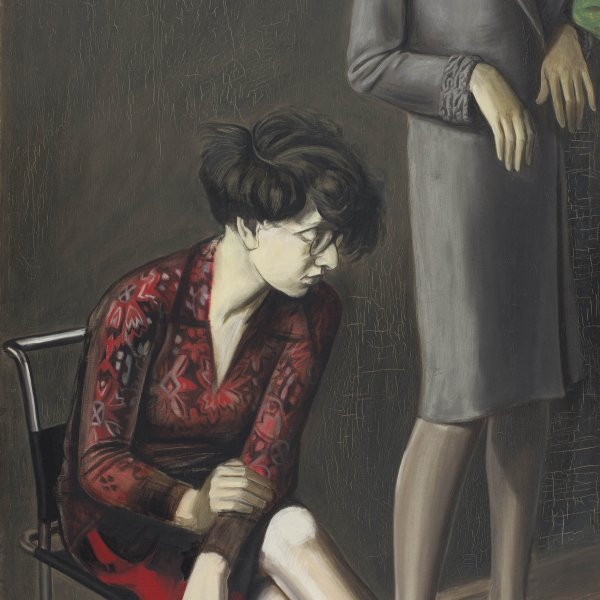Karl Hubbuch
Karlsrhue, 1891-1979
Karl Hubbuch belongs to the movement of artists known as Neue Sachlichkeit (New Objectivity), who used their art to provide a critical and committed vision of German society during the years that followed the First World War.
Hubbuch studied at the Staatliche Akademie der Bildenden Künste in Karlsruhe, where he befriended Rudolf Schlichter and George Scholz. In 1912 he attended graphic art classes at the Kunstgewerbemuseum in Berlin, where George Grosz and Oskar Nerlinger were also studying at the time. Following the break in his artistic training caused by the First World War, Hubbuch returned to Karlsruhe, where he completed his studies and secured a teaching post in 1928. This period saw the development of his interest in painting, which he began to combine with illustration, his chosen field of artistic expression until then. His works reflected the situation in which the country had been left by the war and he displayed a strong preference for portraiture.
Hubbuch’s political stance led him to be dismissed from his post as an educator by the National Socialist Government in 1933. Until 1945 he scraped a living working as a decorative painter for various ceramic firms in southern Germany. After the Second World War he was reinstated to his position at the Karlsruhe Akademie and received numerous recognitions from the authorities. The works he produced in the immediate post-war period continued to denounce the excesses of fascism, though his subject matter gradually became centred on his many trips, mainly to France.
Hubbuch studied at the Staatliche Akademie der Bildenden Künste in Karlsruhe, where he befriended Rudolf Schlichter and George Scholz. In 1912 he attended graphic art classes at the Kunstgewerbemuseum in Berlin, where George Grosz and Oskar Nerlinger were also studying at the time. Following the break in his artistic training caused by the First World War, Hubbuch returned to Karlsruhe, where he completed his studies and secured a teaching post in 1928. This period saw the development of his interest in painting, which he began to combine with illustration, his chosen field of artistic expression until then. His works reflected the situation in which the country had been left by the war and he displayed a strong preference for portraiture.
Hubbuch’s political stance led him to be dismissed from his post as an educator by the National Socialist Government in 1933. Until 1945 he scraped a living working as a decorative painter for various ceramic firms in southern Germany. After the Second World War he was reinstated to his position at the Karlsruhe Akademie and received numerous recognitions from the authorities. The works he produced in the immediate post-war period continued to denounce the excesses of fascism, though his subject matter gradually became centred on his many trips, mainly to France.





